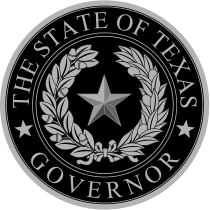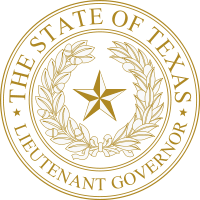William Harding Mayes
| William Harding Mayes | |
|---|---|
 | |
| 23rd Lieutenant Governor of Texas | |
|
In office January 20, 1913 – August 14, 1914 | |
| Governor | Oscar Branch Colquitt |
| Preceded by | Asbury Bascom Davidson |
| Succeeded by | William Pettus Hobby Sr. |
| Personal details | |
| Born |
May 20, 1861 Mayfield,[1] Graves County, Kentucky US |
| Died |
26 June 1939 (aged 78) Austin, Travis County, Texas US |
| Spouse(s) |
(1) Jessie Wise (m. 1886-her death in 1899, b.1869)[2][3] |
| Children |
From first marriage:
Robert C. Mayes[13] |
| Alma mater | Vanderbilt University |
| Profession | Journalist, politician, professor |
William Harding Mayes (May 20, 1861 – June 26, 1939) was Lieutenant Governor of the U.S. state of Texas (1913–1914), a newspaperman who published the Brownwood Bulletin and founder of the University of Texas journalism school.
Early life
Born in Mayfield, Kentucky, Mayes was educated at Norton's English and Classical School in Tennessee, Paducah District Methodist College in Kentucky[15] and Vanderbilt University,[16] class of 1881,[17] where he was a member of Phi Delta Theta.[18][19] He practiced law in Kentucky in 1881 as a partner in the law firm Park and Mayes[20] and in Texas from 1882-1886, serving as county attorney of Brown County, Texas from 1882-1883.[21] He received an honorary doctorate of laws from Daniel Baker College in 1914.
Mayes purchased weekly newspapers in Brownwood, Texas in the 1880s and began the daily Brownwood Bulletin newspaper in 1900, which he published until 1914.[22] He and his brother, H.F. Mayes,[23] founded one of the earliest newspaper chains, owning Texas papers in Brady, Stephenville, Santa Anna, May, Ballinger and Dalhart.[24] The Brownwood Bulletin was the first newspaper in Texas to not be officially linked to the state Democratic party, instead opting to be independently Democratic (supportive of the party in general, but critical when warranted).[25]
Politics
Mayes was elected Lieutenant Governor of Texas in 1912 despite not campaigning for the position.[26] While Lt. Governor, Mayes played a notable role in the controversy surrounding the Daughters of the Republic of Texas' custodianship of the Alamo Mission in San Antonio, siding with Clara Driscoll over Adina De Zavala to demolish most of the remaining portions of the site's long barracks. He made this decision while governor Oscar Colquitt had left the state on business.[27] This event became known as the "Second Battle of the Alamo."
In September 1913, the University of Texas offered him a position as chair of an as-yet created School of Journalism.[28] However, Mayes declined, and immediately thereafter announced he was running for the office of Governor on a platform of statewide prohibition and local option.[29] He was initially considered to be a favorite,[30] but withdrew after Thomas Ball consolidated prohibitionist support,[31] who in turn lost the nomination to James E. Ferguson. Later in life he also served as executive vice president of the Texas Centennial Committee of 1936.[32]
After failing to gain the Democratic nomination for Governor, Mayes resigned from office,[33] founded, and became dean of the University of Texas School of Journalism[34] at the insistence of University President and friend Sidney Edward Mezes.[35]
Journalism
Mayes founded the University of Texas School of Journalism in 1914 and was its dean until 1926.[36] As dean, he founded the The Texas Journalist, a student run newspaper.[37] In 1916, he was one of seven faculty members[38] targeted for firing by Texas governor James E. Ferguson, who found them objectionable.
The complaints against Mayes, who had been one of Ferguson's chief rivals for the 1914 Democratic gubernatorial nomination (along with prohibitionist congressman Thomas Henry Ball), stemmed from negative editorials against Ferguson that the Brownwood Bulletin published while Mayes still owned half of the company. Ferguson was quoted saying that the Bulletin had "skinned me from hell to breakfast."[39] However, Mayes maintained that he was out of the state when these editorials - editorials that were widely reprinted throughout the state in the ensuing controversy[40] - were written and approved by others and that he no longer had a financial stake in the business dealings of the Bulletin. Although Mayes was exonerated by the board of regents, he was later dismissed by the university in 1917[41] in a 4-3 vote.[42] However, the dismissal was reversed and he was fully reinstated as dean[43] and Ferguson was eventually impeached by the Texas Legislature.[44] Later, Governor Ma Ferguson succeeded where her husband had not, and was able to remove funding for the School of Journalism entirely, effectively abolishing its programs.[45]
He served as president of the Texas Press Association in 1899-90 and was elected without opposition[46] president of the National Editorial Association in 1908.[47] He was elected vice-president of the American Association of Journalism Teachers in 1916[48] and president of the Association of American Schools and Departments of Journalism in 1920-21.[49] After retiring from the school and from public life, he published a book entitled "Texas Empire Builders of 1936."[50] In 1940, shortly after his death, the University of Texas acquired his 80-volume library on the history of journalism in Texas.[51]
Personal life
Mayes had seven children: four from Jessie Ware, whom he married in 1886, and three from his second wife, Anna Marshall, whom he married in 1900 after his first wife's death the year before. Mayes is buried in Greenleaf Cemetery in Brownwood.
His son William Harding Mayes Jr. was a print journalist who worked for the Brownwood Bulletin, was editor of the Ranger Times and Harlingen, Texas's The Valley Morning Star.[52]
His son Wendell Wise Mayes was initially a print journalist, working for the Parlier Progress in Parlier, California and later for the Fresno Bee.[53] He was later elected mayor of the Texas cities of Center (1925–1928)[54] and Brownwood (1939–1951),[55] where he owned and ran the KBWD radio station as part of a larger broadcasting chain.[56] In 1939, he was appointed by Governor James Allred to serve on the executive committee of the Texas Big Bend Park Association, which created Big Bend National Park.[57][58][59][60][61][62] He later served as chairman of the Texas State Parks Board,[63][64] as a member of the Brown County Hospital Authority,[65] and chairman of the board of regents of Texas Women's University.[66] Dorothy Evans Mayes, wife of Wendell Wise Mayes, was a noted Texan artist.[67][68] Howard Payne University's Department of Art's gallery is named in their memory.[69] Their son, Wendell Wise Mayes Jr., is a prominent diabetes philanthropist and radio journalist.
His daughter from his second marriage, Isabelle Mayes Hale, was a noted Texas artist.[70] His son from his second marriage, Robert Chappell Mayes, was also a notable Texas journalist working in Edinburg, Texas at the Edinburg Review and served as news editor of the San Antonio Express News[71][72] until his retirement in 1977.[73] Anna Elizabeth Morris Mayes, wife of Robert, was also a Texas journalist, working in Gonzales, Texas, Houston, and San Antonio.[74][75]
References
- William Harding Mayes from the Handbook of Texas Online
- ↑
- ↑
- ↑ Texas Press Association
- ↑
- ↑
- ↑
- ↑
- ↑
- ↑ Brownwood Bulletin
- ↑
- ↑ Census Record
- ↑
- ↑
- ↑
- ↑ Alcalde Vol. 2, Issue 7. pg. 794
- ↑ Vanderbilt University Quarterly, Volume 14
- ↑
- ↑ The Catalogue of the Phi Delta Theta Fraternity
- ↑ List of Phi Delta Theta members
- ↑
- ↑ Paris, Sherry Lynn "Raising Press Photography" pg. 65
- ↑ About The Brownwood Bulletin
- ↑ Texas Press Association
- ↑ Special to the New York Times (June 27, 1936). "William H. Mayes, ex-Texas official".
- ↑ Brownwood Bulletin
- ↑ see speeches delivered to the Texas State Senate
- ↑ A Line in the Sand p. 214
- ↑ [Waco Morning News, 29 Sep 1913, pg. 4]
- ↑ [Waco Morning News, 29 Sep 1913, pg. 4]
- ↑ [Wichita Daily Times, 26 Jan 1914 pg. 7]
- ↑ [The Liberty Vindicator, 27 Feb 1914, pg. 1]
- ↑ Texas Legislative Commission, Presiding Officers
- ↑ Paris, Sherry Lynn "Raising Press Photography" pg. 64
- ↑ http://www.lib.utexas.edu/etd/d/2007/parisd84053/parisd84053.pdf Raising Press Photography to Visual Communication in American Schools of Journalism, with Attention to the Universities of Missouri and Texas, 1880s–1890s
- ↑ Paris, Sherry Lynn "Raising Press Photography" pg. 65
- ↑ About the Department
- ↑ Paris, Sherry Lynn "Raising Press Photography" pg. 72
- ↑ Weiner, Hollace Ava & Kessler, Jimmy (2006). Jewish Stars in Texas: Rabbis And Their Work. College Station, Texas: Texas A&M University Press. pp. 48–49.
- ↑ Paris, Sherry Lynn "Raising Press Photography" pg. 93
- ↑ Paris, Sherry Lynn "Raising Press Photography" pg. 93
- ↑ Paris, Sherry Lynn "Raising Press Photography" pg. 93
- ↑ The Houston Post, 13 Jul 1917, pg. 1
- ↑ Texas Legislative Commission, Presiding Officers
- ↑ Ferguson, James Edward
- ↑ Paris, Sherry Lynn "Raising Press Photography" pg. 97
- ↑ Palestine Daily Herald, 21 Aug 1908, pg. 1
- ↑ Alcalde Vol. 2 Issue 7
- ↑ San Francisco Chronicle, 23 Apr 1916, pg. 39
- ↑ 1899–1900 W.H. Mayes Brownwood Bulletin
- ↑
- ↑
- ↑ [Brownwood Bulletin 9 Feb. 1973, Fri. pg. 2]
- ↑ Brownwood Bulletin
- ↑ Past Mayors of Center
- ↑ Brownwood History Digital Archives
- ↑
- ↑ The Story of Big Bend National Park
- ↑
- ↑
- ↑
- ↑ Parks for Texas: Enduring Landscapes for the New Deal
- ↑
- ↑ Texas State Library and Archives Commission
- ↑ [Brownsville Herald, 26 Jun 1939, pg. 1]
- ↑ [Brownwood Bulletin, 13 Dec 1965, pg. 1]
- ↑ Abilene Reporter-News, 18 Jan 1970, pg. 1
- ↑
- ↑
- ↑ Howard Payne University
- ↑ Dictionary of Texas Artists, 1800–1945 pg. 42
- ↑
- ↑
- ↑ The Alcalde
- ↑
- ↑
| Political offices | ||
|---|---|---|
| Preceded by Asbury Bascom Davidson |
Lieutenant Governor of Texas 1913–1914 |
Succeeded by William P. Hobby Sr. |

